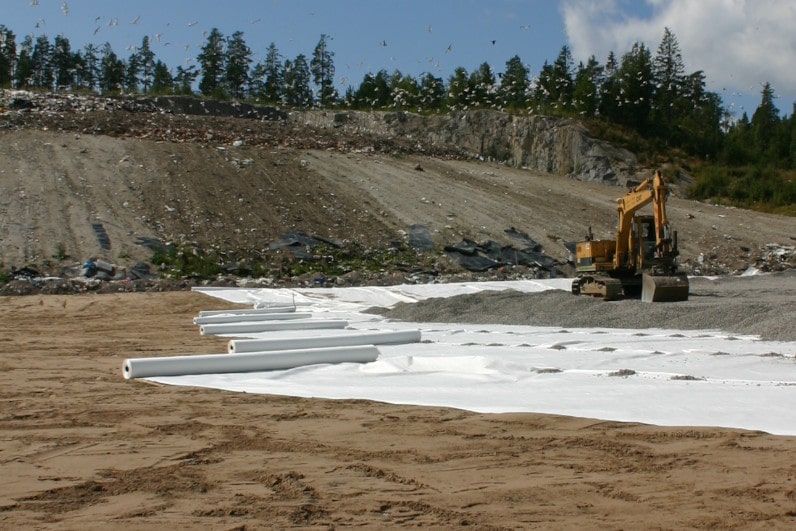Geosynthetics for soil separation & filtration
Non-woven geotextiles are geosynthetic materials widely used to separate, filtrate and protect soils. They are known for their high water permeability and often applied in the road and railway construction, hydro engineering, ground improvement, forestry and agriculture. These products are made of polypropylene or polyester fibres mechanically joined in the process of needle punching and thermal bonding. Non-woven geotextiles can also be made of 100% biodegradable fibres.
Their high water permeability makes them perfect for filtration and drainage. They prevent soils from migrating into the adjacent material, such as drainage aggregate, while allowing water to flow through the system.
They save labour and transportation costs as they are very light and easy to lay on-site. Needle-punched non-woven geotextiles can be thermally treated to improve mechanical properties and reduce the volume for better transportation efficiency.
They have very good tear strength, so they are highly resistant to installation damage. High elasticity and adaptability to surface shape also makes them easy to fold and cut on the job-site.
Non-woven geotextiles are great for filtration, separation, and drainage applications and even protection. They prevent soils from mixing while allowing water to flow, increase the soil strength and decrease the movement of soil particles due to erosion.
Geotextiles are light, thin and consume less resources for installation and transportation than gravel. They extract no dangerous substances to the surrounding environment, so they are toxin-free and eco-friendly.
Non-woven geotextiles require no professional engineering to plan. They can be widely used according to the typical NorGeoSpec (NGS) or Geotextile Robustness Class (GRK) requirements.
separating soft subsoils under roads and railways
increasing structure stability
separating layers between soils or fill layers with a different aggregate size
riverbanks protection
reservoirs construction
vertical and horizontal geosynthetics drains
drainage systems protection
cracks preventing layer under concrete pavements
geomembranes protection against installation damages when building landfills, tunnels and water reservoirs

ViaCon constructs connections. Consciously.
We combine more than three decades of experience with today's cutting-edge technology and vital sustainable goals. ViaCon is a pioneer in the field of Bridges & Culverts-, GeoTechnical- and StormWater Solutions.
ViaCon AB
Box 2064
Vallgatan 21
SE-531 02 Lidköping, Sverige
Copyright 2021 © “ViaCon” Group, All rights reserved.
